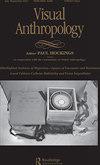泰国当代电影实践中的民族志:个案研究
IF 0.3
Q3 ANTHROPOLOGY
引用次数: 0
摘要
为了扩展当代泰国艺术与民族志的关系,我在本文中采用案例研究的方法,通过民族志的框架来理解电影《无地之土》。由Nontawat Numbenchapol于2019年完成的Din Rai Dan在泰国和缅甸边境的掸邦军营中被枪杀。跨越引人注目的视觉美学和彻底的现场研究,我认为丁莱丹的民族志是在调查的客体-主体关系上制定艺术和干预机构的促成因素,即掸邦军队社区。为此,本研究从电影人与电影主体、电影人与电影观众的角度来探讨《丁莱丹》。总之,这两种观点在电影制作和公映时相互强化了电影的民族志框架。这部电影也被称为《无土之土》(Soil Without Land),原泰语片名《丁莱丹》(Din Rai Dan)暗示了一个地方缺乏身份认同,这个地方是我们踩在上面却不属于的地方。(din)这个词通常与其他单词组合在一起表示地球、地面或国家。单独使用时,“丁”指的是植物生长和茁壮成长所需的土壤,或维持自然的壤土。Din是最基本的;我们的星球是由水构成的。(拉伊)表示缺少或缺少的东西。(dan)指土地或地产。在一起,“拉伊丹”的意思是无国界的;而“din Dan”指的是人造领土。中间的拉伊结合在一起,标题ดินไร้แดนDin rai丹的字面意思是“没有土地,”唤起缺席,或缺乏,社会的本质。Din Rai Dan是一种修辞,一种概念,传达了一个民族或国家的包容或排斥条件-任何国家,但在这里是掸邦。本文章由计算机程序翻译,如有差异,请以英文原文为准。
Ethnography in Contemporary Thai Cinematic Practices: A Case Study
Expanding on the nexus of art and ethnography in contemporary Thailand, I take a case study approach in this paper to apprehend the film Din Rai Dan (Soil Without Land) through an ethnographic framework. Completed in 2019 by Nontawat Numbenchapol, Din Rai Dan was shot at the Shan State Army camp, at the border between Thailand and Myanmar. Straddling compelling visual aesthetics and thorough, on-site research, I regard ethnography in Din Rai Dan as the enabling factor in enacting artistic and interventive agency on the relation of the object-subject of inquiry, that is, the Shan State Army community. To do so, this study approaches Din Rai Dan from the perspectives of filmmaker and film subject, as well as filmmaker and film viewer. Together, these two viewpoints mutually reinforce the film’s ethnographic framework at the time of its making and deliverance to the public. Also known as Soil Without Land, the film’s original Thai title ดินไร้แดน Din Rai Dan hints to the dearth of identity to a place that is the land on which we tread but do not belong. The word ดิน (din) is commonly combined with other words to denote earth, ground, or country. Used alone, din refers to the soil that plants need to grow and thrive, or the loam that sustains nature. Din is fundamental; it is what our planet is made of. ไร้ (rai) indicates something that is missing or lacking. แดน (dan) implies land or estate. Together, ไร้ แดน rai dan means borderless; while ดิน แดน din dan refers to manmade territory. Conjoined with the interlocutory rai, the title ดินไร้แดน Din Rai Dan literally means “no land,” evoking the absence, or lack, of the essence of society. Din Rai Dan is a figure of speech, a concept, that relays the condition of inclusion or exclusion to a nation or state—any state but in this case the Shan State.
求助全文
通过发布文献求助,成功后即可免费获取论文全文。
去求助
来源期刊

Visual Anthropology
ANTHROPOLOGY-
CiteScore
1.00
自引率
50.00%
发文量
19
期刊介绍:
Visual Anthropology is a scholarly journal presenting original articles, commentary, discussions, film reviews, and book reviews on anthropological and ethnographic topics. The journal focuses on the study of human behavior through visual means. Experts in the field also examine visual symbolic forms from a cultural-historical framework and provide a cross-cultural study of art and artifacts. Visual Anthropology also promotes the study, use, and production of anthropological and ethnographic films, videos, and photographs for research and teaching.
 求助内容:
求助内容: 应助结果提醒方式:
应助结果提醒方式:


